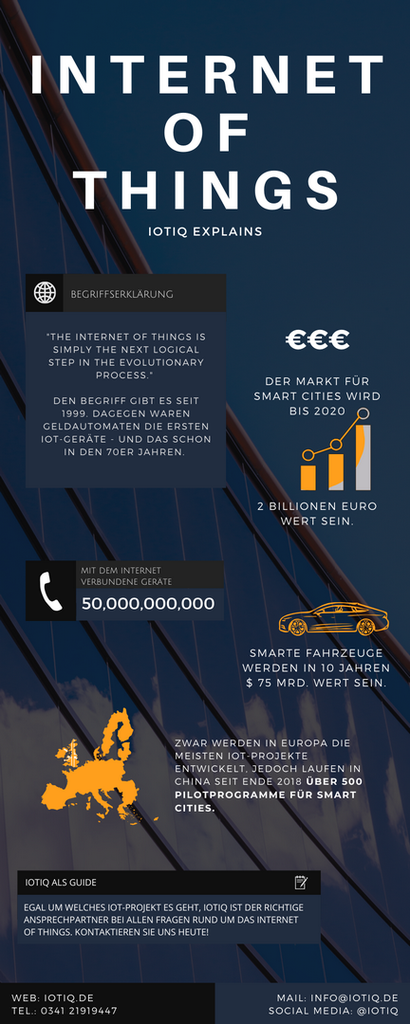More and more organisations and governments are giving priority to the digital transformation, as evidenced by the continued diffusion of IoT technologies. In 2018, there were seven billion IoT devices, although 87 percent of people at that time said they were unaware of the term 'Internet of Things'. So we were way ahead of our vocabulary, without even realizing it. Experts estimate the number of devices at 31 billion by 2020 and more than 75 billion IoT devices are expected to be connected to the Internet by 2025. Of course, this will change the workflows and requirements of many different industries. In China, over 500 Smartcity pilot programs have been running since the beginning of 2018. The South Korean mobile phone giant Samsung holds the most IoT patents - about 850 of them. But half of the world's total IoT projects are developed in Europe. Forecasts for the current year predict that over 90 percent of companies will use IoT technologies. 3.5 billion cellular IoT connections are expected to be installed. Similarly, 90 percent of cars and 80 percent of industrial companies are expected to use IoT technologies.
In view of all the numbers and facts, it quickly becomes clear that, on the one hand, every area of our lives is affected by the Internet of Things. On the other hand, in order to remain competitive, every company should follow the development so that it won’t be swallowed up by the already stronger digitised competition. And this can also be worthwhile financially. Around 94 percent of the companies that introduced IoT in any way achieved a return on investment, even if this meant investing at the beginning. While global spending on the Internet of Things in 2016 was still at USD 737 billion, it has now reached USD 1.29 trillion. By 2021, the size of the industrial IoT market is expected to reach USD 124 billion. By 2024, the global IoT healthcare market is expected to be worth USD 14 billion. And in six years - experts estimate - the market for IoT devices will reach USD 1.1 trillion.
Where does the intelligence of technology come from? Not from the features themselves or from individual devices, but it comes from connections. IoT networks link devices, centralize their control and exchange information. The technologies are related physical and digital components that transmit data without the help of human mediators. However, only relevant information is stored in the central infrastructure via local IoT gateways (data hubs) and not all the unfiltered data as it was previously realized via simple cloud solutions. All commercial IoT devices must be tested and undergo a strict regulatory certification. Each region has its own regime for this - in Europe the 'CE'. IoT devices often do not require an IP address, instead they can be assigned a unique UID identifier that is compatible with the integrated wireless connection, which can ultimately be safer, cheaper and more energy efficient. This requires attention to other security vulnerabilities, such as weakly encoded passwords, lack of device management, inadequate data protection, insecure data transmission and storage, dangerous third-party components, or insecure default settings, network services or system interfaces that facilitate the theft of confidential data. On average, IoT devices are attacked within 5 minutes; 75 percent of infected devices in attacks are routers.
IoT devices should always be thoroughly scanned before they are inserted into the network. The more IoT points you connect to it, the more vulnerable it becomes to cyber security. To protect the network, you can use Endpoint Detection and Response (EDR), which monitors endpoints, proactively seeks out threats and sends alerts if necessary. As a further security measure, the network for IoT can be created wirelessly and separately, separate from the corporate network. So in addition to digital creativity and interest in technical features, know-how in IT development is also required to master the digitization process skilfully.

